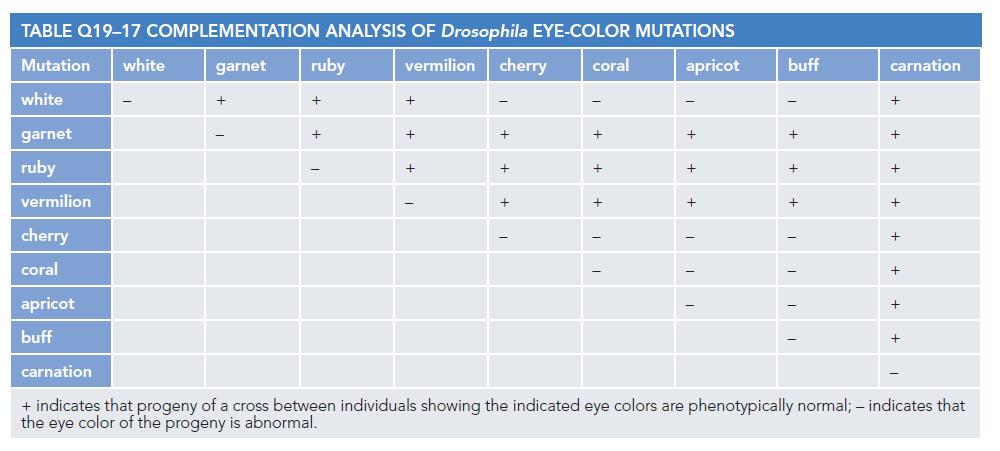Early genetic studies in Drosophila laid the foundation for our current understanding of genes. Drosophila geneticists were
Question:
Early genetic studies in Drosophila laid the foundation for our current understanding of genes. Drosophila geneticists were able to generate mutant flies with a variety of easily observable phenotypic changes. Alterations from the fly’s normal brick-red eye color have a venerable history because the very first mutant found by Thomas Hunt Morgan was a white-eyed fly (Figure Q19–17). Since that time, a large number of mutant flies with intermediate eye colors have been isolated and given names that challenge your color sense: garnet, ruby, vermilion, cherry, coral, apricot, buff, and carnation. The mutations responsible for these eye color phenotypes are all recessive. To determine whether the mutations affected the same or different genes, homozygous flies for each mutation were bred to one another in pairs and the eye colors of their progeny were noted. In Table Q19–17, a + or a – indicates the phenotype of the progeny flies produced by mating the fly listed at the top of the column with the fly listed to the left of the row; brick-red wild-type eyes are shown as + and other colors are indicated as –.
A. How is it that flies with two different eye colors ruby and white, for example can give rise to progeny that all have brick-red eyes?
B. Which mutations are alleles of the same gene and which affect different genes?
C. How can different alleles of the same gene give different eye colors?

Step by Step Answer:

Essential Cell Biology
ISBN: 9780393680362
5th Edition
Authors: Bruce Alberts, Karen Hopkin, Alexander Johnson, David Morgan, Martin Raff, Keith Roberts, Peter Walter





